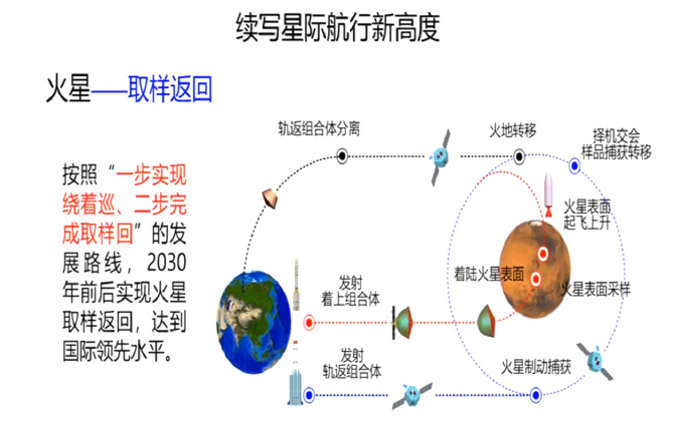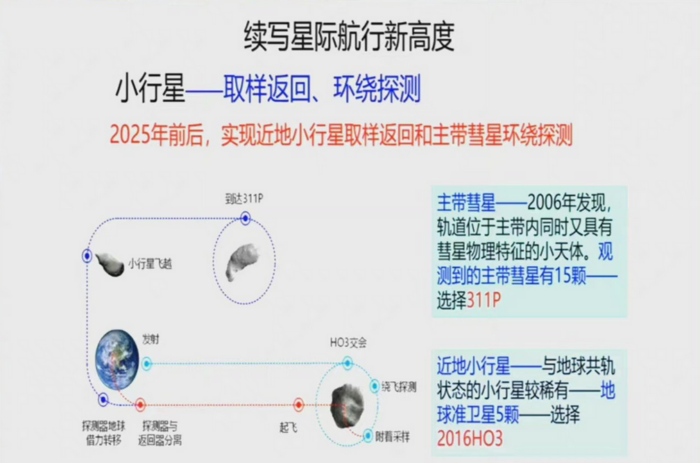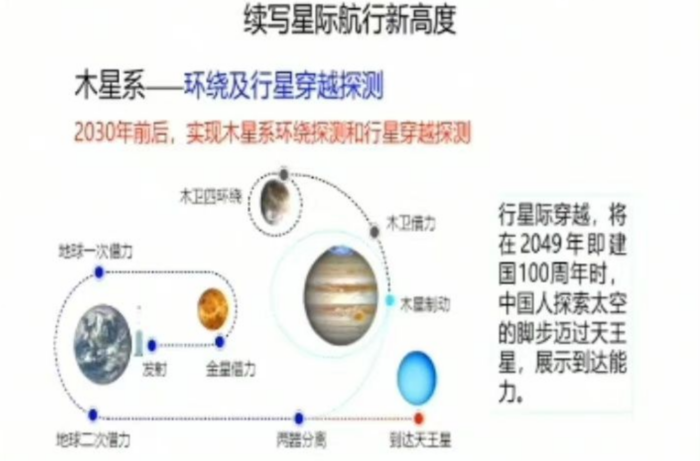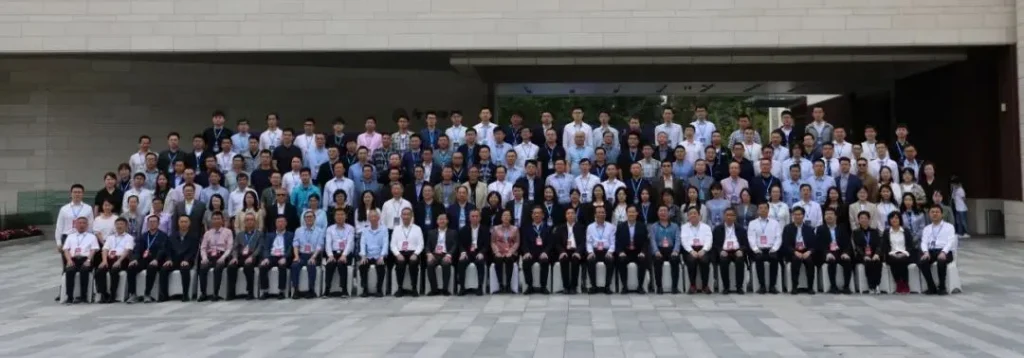China’s 338th Engineering and Technology Forum took place from October 17 to 19 in Shenzhen, with this edition focusing specifically on deep space exploration.
Among the participants were the Chinese Academy of Engineering, CNSA, CLEP, and CASC. From the government & academic sectors were the Municipal Government of the City of Shenzhen and the Shenzhen branch of the Harbin Institute of Technology, one of the country’s top aerospace universities. Several major missions were prominently discussed during the forum, and notably during the keynote speeches on 18 October, which were broadcast live. Let’s briefly recap some takeaways.
Mars on the Horizon
There was a lot of talk about Mars. A first presentation notably discussed the Mars opposition that took place in Sept.-Oct. 2021, during which Mars, the Sun and the Earth were aligned, meaning that the Sun blocked or interfered with Mars-Earth signals. This is why the Zhurong was powered down during a couple of weeks.
Another part of the presentation detailed China’s future Mars sample return mission. The mission would consist in a succession of 2 launches (likely in 2028), with a mission completed date slated for 2030: a first rocket would send a lander and ascent vehicle to perform the sample extraction; and a return vehicle would be launched separately to dock with the ascent vehicle in Martian orbit. The exact rockets to be used were not mentioned, but the models shown on the slide suggested a Long March 5 and a smaller Long March 3B: a departure from the previously proposed configuration with a single Long March 9 launch.
The presentation also reminded the public that the Mars sample return as well as the asteroid, Jupiter and Uranus missions had been officially validated by Chinese policy makers in Sept. 2021 (see rest of the article).

Finally, the Institute of Space Sciences of Shandong University discussed research on a method of extracting oxygen from CO2 on Mars called Glow Discharge, and which differs from the one used by MOXIE on NASA’s Perseverance rover. (At a very high level), MOXIE splits CO2 into CO and O (to avoid the formation of carbon residue), while Glow Discharge produces carbon and oxygen directly. According to the researcher Wu Zhongchen, Glow Discharge has the advantage of requiring less power (it doesn’t need the high thermal conditions of MOXIE), and is adapted to working in low atmospheric pressure conditions, which is the case on Mars.
Note unrelated to the conference: just a week or so after, we also saw an announcement of collaboration between ESA and CNSA to test a “blind data transmission” technique in Martian orbit, with China’s Zhurong transmitting data back to Earth using the Mars Express orbiter operated by ESA. We covered the event on the week’s Dongfang Hour, available here.
Deep Space Missions Confirmed
The event was also a opportunity for China to cover in detail a number of planetary missions that had been officially validated in September 2021. This included:
- An asteroid sample return mission (2016H03, 311P): the launch is planned for 2025 and would include rendez-vous and sampling of 2016H03, and the return of the samples to Earth. After this, the probe would then head towards asteroid 311P.
- A Jupiter/Callisto and Uranus probe: two modules would launch together circa 2030 and perform multiple gravitational assistance maneuvers (Venus x1, Earth x2). The two modules would then separate, with one exploring Jupiter and Calisto while the second would head towards Uranus (with an objective of reaching the planet in 2049).


China’s Lunar Ambitions Were Front and Center
There was also a fascinating talk by Guo Linli (果琳丽), a researcher at the Institute of 508 of the Chinese Academy of Space Technology (CAST). Guo’s presentation focused on Lunar in-situ resource utilization (ISRU), and more specifically on how to harvest ice on the Moon. Water is a major resource that can be used to produce oxygen and hydrogen, which are necessary for a sustainable presence of life, but also useful as rocket fuel. Without going into too much detail, the presentation went over the problem of the accessibility of ice in the permanently shaded regions of the south pole (PSRs), and the methods to melt and use the ice through chemical, solar and mechanical means.
Another way to harvest oxygen on the Moon discussed in the presentation was through the processing of Lunar regolith. Regolith is abundant on the surface and more accessible, and contains oxygen notably under the form of metal oxides. The highlight of the presentation was a proposal of an oxygen extraction experiment on an upcoming Chang’e Lunar spacecraft, using Lunar regolith and employing a heating process to turn various oxides contained in the regolith into oxygen. Guo Linli also mentioned that the secondary components produced by the extraction process could also be used as construction material, as shown by tests performed by the Institute 508. While this mission is only at the state of a proposal, it seems likely that such an experiment will be a priority for China’s next Lunar missions. ESA, NASA, and Russia all have ISRU missions planned, adding additional pressure on China to speed up.

Other Moon-related presentations included:
- Details on hypothetical advanced drilling, sample analysis, and sample return missions on the Moon (Shenzhen Institute of Deep Earth Sciences & Green Technology)
- Design of synthetic Lunar regolith, comparison with actual samples, 3D printing properties (Beihang University)
- Establishment of a sustainable power network and energy storage strategy on the Moon (Hunan University, CASC)
- Earth observation with Lunar-based instruments (Shenzhen University)
Conclusions and Takeaways
Overall, the Deep Space Exploration Science, Technology, and Application Forum was an indication of China’s major space exploration ambitions. From comprehensive Lunar base plans to significant Martian exploration efforts, it seems that China is going to play an absolutely major role in humanity’s space exploration for the coming years and decades.
Moving forward, China’s space exploration ambitions will also increasingly be a valuable tool for international relations. As noted above, the week after the forum was followed by a major week in Sino-European deep space cooperation, with several announcements indicating cooperation with China on missions where China is the leading player (such as the ILRS). While it’s hard to predict how humanity’s progressive exploration of the cosmos will develop, one thing that is certain in the short-medium term is that it will involve China.

Note: a special thanks to Larry Teds and Phil Leaf for sharing some of the slides presented in this post.



